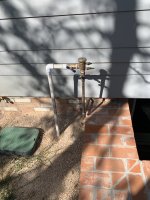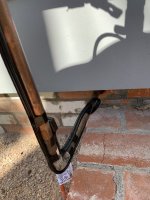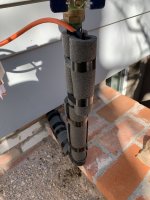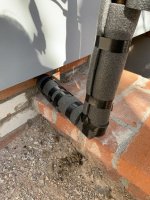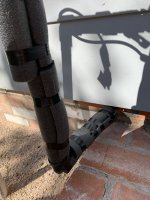Derek C
New Member
Hey everyone!
My situation is this: my wife and I recently bought a house in Denver, CO. The first snow of the year is coming up, with temperatures expected to reach a low of 16. In preparation for this, I borrowed an air compressor from my dad and we flushed the sprinkler lines. However, we were unable to find the shutoff valve for the sprinkler line anywhere. It looks like the pipe goes straight into where the basement ceiling is, but the ceiling and walls down there are drywall, and I can't imagine they'd put a valve behind drywall.
The seller of the house is a builder, and I'm guessing that he either did it himself or had one of his subcontractors do it, and I believe that the sprinklers were done since last winter. I have a sinking suspicion that somehow they did not install a shutoff valve. I've reached out to the seller to find out if it's in some strange place, but haven't heard back.
The snow is expected this Thursday, just a few days away, and I imagine local plumbers are swamped with everyone looking to do the same preparations, although I plan to try to schedule something tomorrow.
So, my question is this: If I'm unable to locate the shutoff valve and unable to get a plumber to do an emergency installation of one, is there anything I can do to protect the exterior pipe? My thoughts have spiraled into keeping a space heater running out there with a blanket over it, or changing out some hot stones every 30 minutes, or (best idea) starting a small fire next to the pipe with a tipi around it. I'm sure there's some pipe installation I can get, but would that be enough? I suppose worst come to worst I could shut off the water to the house and drain it for the day.
Any advice would be appreciated, thank you!
Derek
My situation is this: my wife and I recently bought a house in Denver, CO. The first snow of the year is coming up, with temperatures expected to reach a low of 16. In preparation for this, I borrowed an air compressor from my dad and we flushed the sprinkler lines. However, we were unable to find the shutoff valve for the sprinkler line anywhere. It looks like the pipe goes straight into where the basement ceiling is, but the ceiling and walls down there are drywall, and I can't imagine they'd put a valve behind drywall.
The seller of the house is a builder, and I'm guessing that he either did it himself or had one of his subcontractors do it, and I believe that the sprinklers were done since last winter. I have a sinking suspicion that somehow they did not install a shutoff valve. I've reached out to the seller to find out if it's in some strange place, but haven't heard back.
The snow is expected this Thursday, just a few days away, and I imagine local plumbers are swamped with everyone looking to do the same preparations, although I plan to try to schedule something tomorrow.
So, my question is this: If I'm unable to locate the shutoff valve and unable to get a plumber to do an emergency installation of one, is there anything I can do to protect the exterior pipe? My thoughts have spiraled into keeping a space heater running out there with a blanket over it, or changing out some hot stones every 30 minutes, or (best idea) starting a small fire next to the pipe with a tipi around it. I'm sure there's some pipe installation I can get, but would that be enough? I suppose worst come to worst I could shut off the water to the house and drain it for the day.
Any advice would be appreciated, thank you!
Derek

